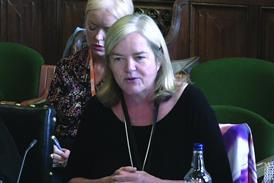The litigation funding industry is fighting on several fronts. As the Gazette has reported, the battle is far from limited to the Civil Justice Council’s review of the sector, which may lead to unwelcome changes such as more onerous regulation, caps on funders’ returns and a new duty for parties to disclose the presence of funding. At least as concerning for funders is a key hearing looming in the Court of Appeal, due to be heard before the end of July. This will decide on the validity of litigation funding agreements (LFAs) based on a multiple of the sum invested rather than a percentage of damages. Since PACCAR, almost all LFAs are based on the multiple approach, and if the appeal court rules that it is not valid, the entire industry will be thrown into crisis.

As if all of the above is not enough, however, there is yet another potential crisis looming, at least for the funding of class actions. Once again, the fate of the litigation funding industry lies in the hands of the Court of Appeal. On 2 April it heard an appeal from the Competition Appeal Tribunal (CAT) in Gutmann v Apple Inc & ors. This is a collective action on behalf of iPhone users that alleges Apple abused its dominant position through a lack of transparency when it introduced software to deal with an iPhone battery problem.
The Court of Appeal hearing dealt with a particular question that is of vital importance to the funding of group actions in the CAT: can litigation funders be paid out of damages before they have been distributed to class members? Or must they wait until the damages have been distributed, and then take their fee from whatever money is left?
This matters, because if funders can only be paid out of unclaimed damages there is an obvious risk that there may not be enough left in the pot for the funder to get paid. Funders will not want to take that risk and will no longer want to fund such claims.
Read more by Rachel Rothwell
In the decision being appealed, the CAT had ruled in March 2024 that it was perfectly valid for funding agreements to allow for a funder to be paid first, before damages are distributed to class members. It noted that at the end of the proceedings, the CAT will still have full discretion to decide how much the funder should be paid, and in what priority order.
The CAT also gave an indication as to how it might approach some different scenarios. If the litigation had not been very successful and the damages awarded were low in relation to the funder’s fee, for example, the CAT may well refuse to give absolute priority to the funder. But where there is a big award, but a very effective method has been devised to make payments to class members, there might be ‘good reason’ to give priority to the funder to claim all or part of its fee, before the damages are paid out to the class members.
Following last week’s three-hour hearing, we now await the Court of Appeal’s decision on this vital question of whether funding costs can be deducted from damages before they are distributed to class members. Privately, those listening closely to the mood music in the court tentatively predict that the answer will be yes. This would elicit a sigh of relief from the funding industry. But with judgment reserved, the sector will be holding its breath for a while yet.
- The Court of Appeal’s ruling in Gutmann v Apple Inc & ors has now been handed down. The court held that litigation funders can take their fee before any damages are distributed to class members.
Rachel Rothwell is editor of Gazette sister magazine Litigation Funding, the essential guide to finance and costs.
For subscription details, tel: 020 8049 3890, or visit the Litigation Funding page






























No comments yet